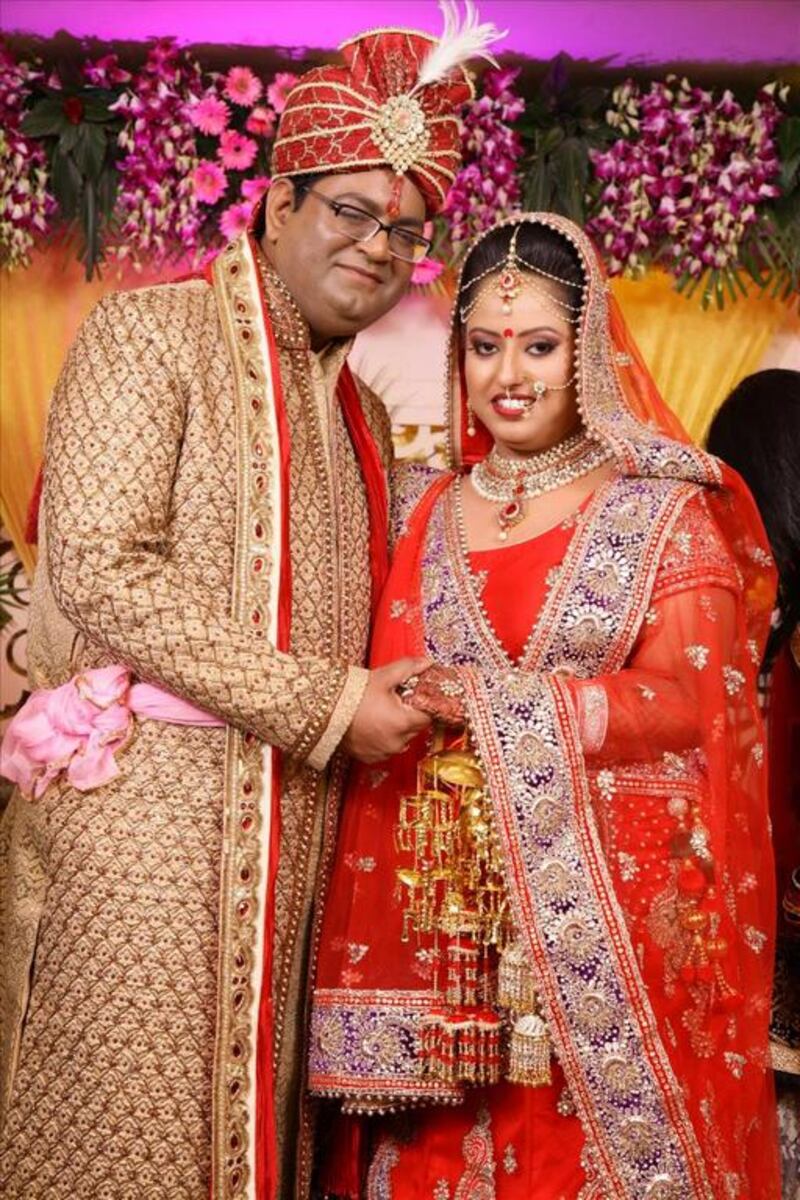It is time to think about settling down and getting married and you want to keep everyone happy, not least your parents.
For many Indians, this means an arranged marriage, because a partner has to be from the same religion, caste and background. But increasingly, young Indians want to have some say in the selection process.
In the process, they are forgoing the old-fashioned idea of a marriage broker, who some deem are totally out of touch. They have also shunned matrimonial websites on the grounds that they focus too rigidly on the conventional criteria of caste, religion and educational qualifications.
Twenty-six-year old medical intern Neelam Bhatia, who wants a romantic relationship that could lead to marriage, was “looking for someone with the same outlook on life, the same priorities, the same humour”. But given that her job at a Bangalore hospital leaves little time to socialise, she turned to TrulyMadly.
The dating app that launched on Valentine’s Day in 2014 is geared towards young millennials. TrulyMadly also verifies personal details of those who register because much like international markets, fake profiles are a big problem for matchmaking and dating portals in India.
“For women particularly, verification is important,” says Hitesh Dhingra, 36, the Delhi-based co-founder of the website, which he started with Sachin Bhatia and Rahul Kumar.
“Thirty per cent of the men registered on matrimonial sites are married. These websites don’t do any verification. We check their identity, their numbers, employment details and crosscheck their Facebook and Linked-in accounts.”
In India arranged marriages continue to be the norm. A 2013 survey conducted by the Taj Group of Hotels revealed that 75 per cent of young Indians prefer arranged marriages.
What is in flux is the mode of finding the right match. It has gone from relatives fixing marriages to agents and brokers, to classified ads in the newspapers and then, about 15 years ago, to matrimonial websites such as BharatMatrimony, Shaadi.com and Jeevansaathi.
These websites marked an important shift in how marriages were arranged: they allowed prospective grooms and brides to meet multiple people before settling on a match approved by both sets of parents.
More than 22 million Indians use matrimonial sites, according to a 2013 survey by India’s Internet Economy Watch Report. But many of these websites are used by parents to find a spouse for their sons and daughters.
That’s where dating apps have stepped in. They allow a young person more direct contact, without involving the family, and enable them to reject people without parental involvement or other complications. They can emphasise compatibility and common interests rather than the dry, utilitarian matching of qualifications, income, height and skin complexion.
This explains one of TrulyMadly’s distinctive features: psychometric testing to ensure compatibility.
There are also questionnaires and quizzes devised by psychologists and relationship counsellors. Once the data is uploaded, the website algorithm kicks in to match users.
“India has 100 million people over the age of 21 who are looking for partners. For them, matrimonial websites, with parents interfering and participating, are not cool,” says Dhingra.
However, many of these dating apps differ from those in the West, because the emphasis is on stable, long-term relationships and marriage, rather than casual flings.
But why can’t young Indians find their own partner? Well, Indian society is in flux. Single men and women mingle much more than ever before. Many of them have left home to work in a new city, where they usually work long hours. If they fail to meet someone at work, the chances of meeting someone elsewhere are remote.
For Bhatia, that was the appeal of TrulyMadly. She concedes her crazy hours would make it hard to meet Mr Right. In her case, her TrulyMadly profile was sent to a chartered accountant and the two began dating.
Outsiders might think there is a clear dichotomy between dating and matrimony, but that is not the case in India. Rather, it is a continuum, with varying degrees of arrangement and free choice and a tremendous amount of overlap between the two.
So, while earlier – before dating apps were available – people used matrimonial sites to find dates, now, people use dating apps to find a spouse.
More than three million Indians have downloaded the popular dating app Woo.
“Most people are looking at a process of courtship that ends in marriage. They want to get to know the person and find the best fit,” says co-founder Sumesh Menon.
“So a dating app allows them to meet online, when they feel comfortable, they meet offline, then meet the parents. This process also means they feel more certain about their choice – there won’t be any nasty surprises in store after marriage.”
Before meeting through Woo in November 2014, 30-year-olds Kartik and Shruti Arora had half-heartedly been letting their parents find a partner for them.
A few chat sessions followed, then some face-to-face meetings during which everything, as Shruti tells it, “clicked into place”.
The final seal of approval came when the parents met. The pair married four months later.
“I didn’t want to upset my parents, but I wanted to be in charge of my life,” says Shruti. “The important thing about these apps is their social acceptance. Because no one is embarrassed about using them, they are changing the face of marriage here, and everyone, including the parents, is happy.”
Woo demonstrates the rise of home-grown dating apps in India. While Tinder is well known, the indigenous online offerings are tailored to Indian cultural needs.
For example, Woo, which largely works on matching people based on their interests, withholds the names of women and makes users answer a set of questions before allowing them to chat. This helps women feel safer.
Other apps that have cropped up in India include Aisle, which describes itself as a cross between a dating and a matrimonial app. It asks for detailed information about your appearance and background.
Another offering is Floh (Find Life Over Here), which operates in 15 cities and five countries. It was started to help people who connect online meet offline, and it hosts matchmaking events throughout the year.
Floh believes you don’t meet someone through an algorithm but through real life interaction. The events it organises – themed around music, food or a sport – are usually limited to about 30 people.
Woo’s Menon says it is too soon to write off the matrimonial websites, though. Dating apps and matrimonial sites currently coexist because they cater to different audiences.
“But five years down the line, more young Indians will connect via products like ours because they will want to take the decision of a life partner into their own hands, and dating apps will be their first port of call,” he says.
“Yes, parents are important. But at the end of the process – to approve a choice – rather than leading it.”
Perhaps even more important than finding the right partner, what online marriage apps offer is some sense of control.
For Nitin Agarwal, a 28-year-old software engineer in New Delhi, the parental pressure to get married began a year ago. His repeated attempts to find the “right girl” in his social circles were not working out. But thanks to the online options, Agarwal feels all is not lost.
“I knew either I had to keep waiting for her to turn up – and my parents would have fretted about how long it was taking. Or I had to resign myself to my parents choosing my marriage partner,” he says.
“That’s when I decided [to] get onto a dating app.”
artslife@thenational.ae





